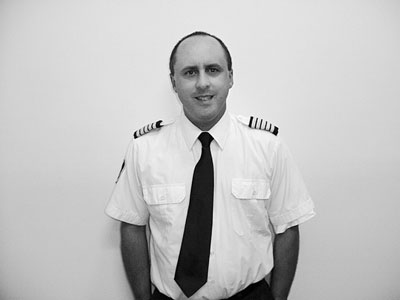
Features
Emergency Management
Hot topics
Flashback 9-11: Fireball Over Manhattan
Editor’s note: This column was originally published in the October 2001 issue of Canadian Firefighter and EMS Quarterly.
September 7, 2011
By Pierre Zundel
Editor’s note: This column was originally published in the October 2001 issue of Canadian Firefighter and EMS Quarterly.
In the hours and days that followed the Sept. 11, 2001, terrorist attacks against New York and Washington, I paced in my home and office wondering how I could get to these places and help the emergency workers there with the horrific task they had ahead.
I called the Red Cross and Emergency Measures Organization to put my name in as a volunteer paramedic and firefighter. I worked with the local EMS organization on duty watches in the event diverted planes were also hijacked on their way to Moncton or Halifax. I walked around like a caged cat, looking for a way to DO something to help. As it became apparent that our colleagues to the south would have all the help they needed from their own counterparts in the United States, I turned my thoughts to the meaning of the attacks for us as members of a small fire department in rural Canada. Is there any lesson for us in those events?
The now ever-present pictures of the fireball and collapse of the World Trade Center taught me that the improbable, the unimaginable . . . the worst can happen. I learned that it can happen without any warning, in the most difficult places to respond and on scales that we never expected. As a firefighter and a paramedic, I have always had an intellectual understanding of the need for disaster planning; for investing in preparation, for training and practice drills. The sight of that second plane hitting the World Trade Center has now carved it on my heart and mind in a way that I don’t think will ever allow it to fade. This says to me, be prepared for anything. Invest in disaster planning now while the disaster is not yet upon us. Learn and practise your incident command system process. Train with other emergency agencies. Do it like it was going to happen tomorrow. It just might.
It was not until the day after the incident that I learned that a big chunk of the leadership of the Fire Department of New York perished under the Twin Towers when they collapsed. My first reaction was a sense of pride in those people putting themselves at the same risk as their frontline personnel. Then I wondered about the additional chaos that must have been created by a chain of command that was ruptured so early in a huge emergency. This led me to ask whether we should not distribute our leadership team in different places on fire scenes.
I asked myself whether we really serve the best interests of our community when we expose the command structure to excessive risk during an incident. I am still torn by a conflict between the desire to lead by example, to ask nothing of my members that I would not do myself, and the desire to do the best thing for the people we serve. One thing I am sure about after Sept. 11, 2001, is that as leaders in emergency service organizations, we are not invincible. As a result, I will be investing heavily in the coming months in my own department in leadership skill development to help us cope with any losses of command personnel at incidents, in pre-plans and drills for my junior officers to prepare them to take over if the senior group is lost or incapacitated.
None of these things is really a new idea. We all knew them before Sept. 11. What is new is my level of determination to make them happen. I can’t help the Fire Department of New York or the community it serves very much from here. What I can do is be prepared in my own community. How am I going to do this? Well, this fire chief is going to be like a pitbull in pursuing resources, pushing municipal agencies to do their part of disaster planning, improving our ability to respond and communicating the importance of preparation to our members and to our community.
And that picture of the fireball over Manhattan that is now over my desk?
It will remind me why.

|
Pierre Zundel was chief of the 23-member Stanley (N.B.) Volunteer Fire Department in 2001.
Print this page